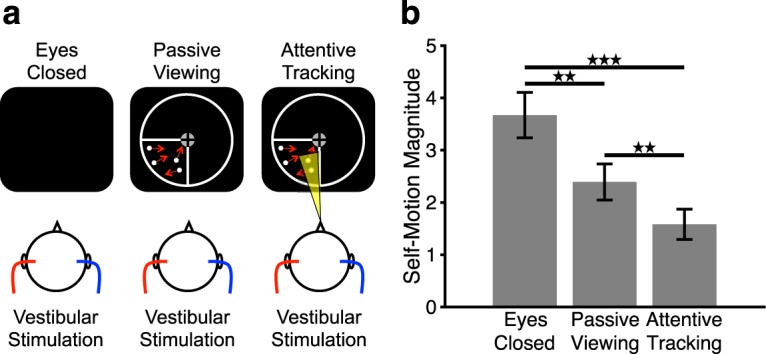Figure 1.

Cross-modal effects of visual attention on vestibular sensations. a, Stimulus conditions. Left, Vestibular-only condition. Subjects kept their eyes closed and received vestibular cues via caloric vestibular stimulation (e.g., hot left and cold right; see Materials and Methods). Middle, Vestibular + Passive Viewing condition. Subjects passively viewed moving disks in the lower left visual quadrant and received caloric vestibular cues. Right, Vestibular + Attentive Tracking condition. Subjects attentively tracked a subset of moving disks as targets and received caloric vestibular cues. On each of the tracking trials, subjects signaled whether the disk highlighted at stimulus offset was among the tracked targets (see Materials and Methods). The circumference and outline of the lower left visual quadrant are shown in white for illustrative purposes only and were not visible during the experiment. b, Mean (± SE) ratings of vestibular sensations during different visual conditions for n = 15 subjects. Larger values on the y axis indicate stronger vestibular sensations. Significant differences between conditions: **p < 0.01, ***p < 0.001.
